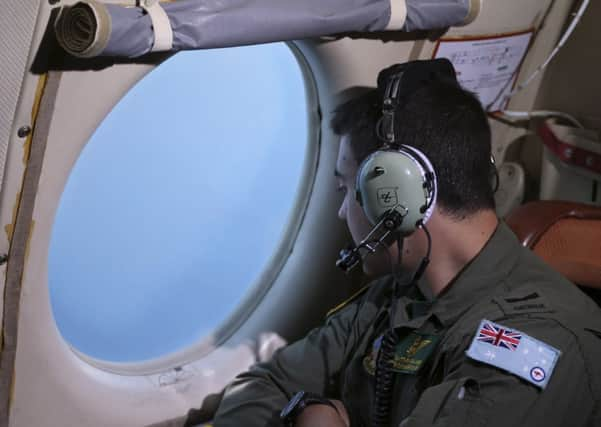Malaysia Airlines: Debris spotted in Indian Ocean


The location was 75 miles south of where an Australian satellite picked up objects two days before.
“The news that I just received is that the Chinese ambassador received a satellite image of a floating object in the southern corridor and they will be sending ships to verify,” Malaysian defence minister Hishammuddin Hussein told reporters.
Advertisement
Hide AdAdvertisement
Hide AdAustralian officials said the location was searched yesterday, before they learned of the Chinese satellite image, but the object was not found. Currents are thought to have carried away whatever was there.
On the third day of an international search involving a flotilla of boats and planes, the Australian Maritime Safety Authority, which is overseeing the operation, said a civil aircraft reported seeing small objects in the search area, including a wooden pallet.
But a New Zealand military plane diverted to the location found only clumps of seaweed.
Last night the Australian authorities confirmed that no further progress has been made.
The latest satellite image is another clue in the baffling search for Malaysia Airlines Flight 370, which dropped off air traffic control screens on 8 March over the Gulf of Thailand with 239 people on board.
In a statement on its website announcing China’s find, the State Administration of Science, Technology and Industry for National Defence did not explain why it took four days to release the information. But there was a similar delay in the release of the Australian satellite images because experts needed time to examine them.
Two military planes from China arrived yesterday in Perth to join Australian, New Zealand and US aircraft in the search. Japanese planes will arrive today and ships were in the area or on their way.
Erik van Sebille, an oceanographer at the University of New South Wales in Sydney, said the currents in the area typically move at about one yard per second. Based on that typical speed, a current could move a floating object about 107 miles in two days.
Advertisement
Hide AdAdvertisement
Hide AdWarren Truss, Australia’s acting prime minister while Tony Abbott is abroad, said before the new satellite data was announced that a complete search could take a long time.
“It is a very remote area, but we intend to continue the search until we’re absolutely satisfied that further searching would be futile – and that day is not in sight,” he said.
“If there’s something there to be found, I’m confident that this search effort will locate it,” Truss said from the base near Perth that is serving as a staging area for search aircraft.
The missing plane, which had been bound for Beijing, carried 153 Chinese passengers. In the Chinese capital yesterday, relatives of passengers rose up in anger at the end of a brief meeting with Malaysia Airlines and Malaysian government officials.
“We want to know what the reality is!” they shouted in frustration over what they saw as officials’ refusal to answer questions. They told reporters they have been “strung along, kept in the dark and lied to by the Malaysian government”.